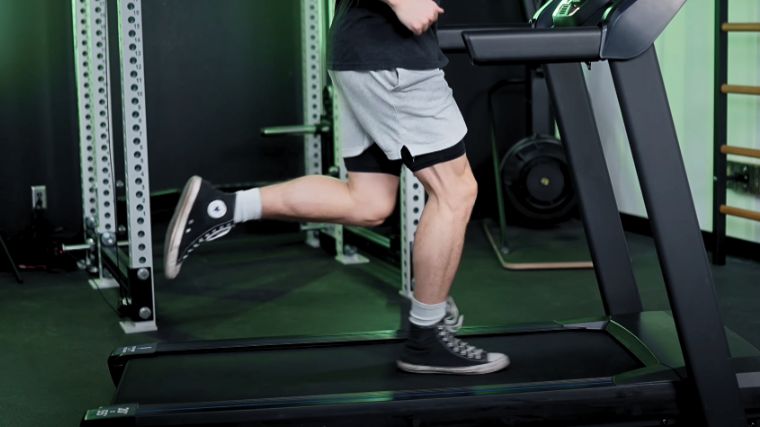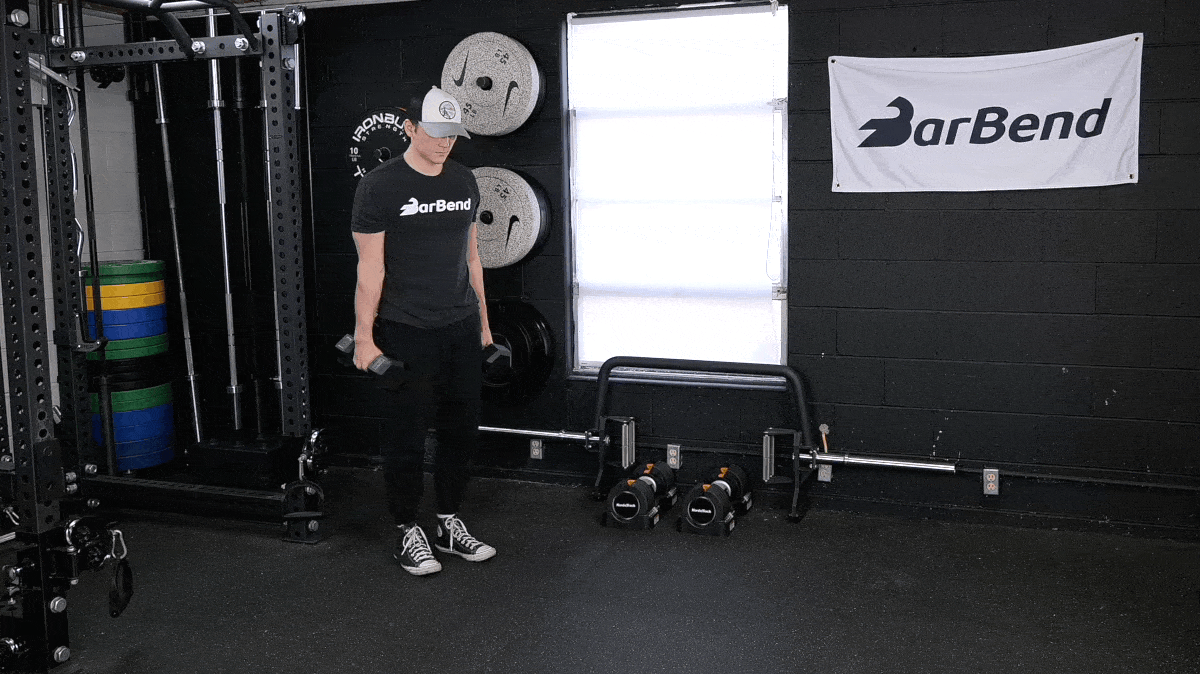If you’re a treadmill or track aficionado, you may stumble into some aches and pains at a certain point. While running injuries aren’t a guarantee, overuse or underuse of certain muscles might eventually lead to some discomfort.

As a runner, you’ve got to pay special attention to your knees. To equip you with the knowledge you’ll need to navigate any treatments you might seek out, I spoke with physical therapist Heather Asti. With two decades of experience and several degrees in physical therapy under her belt, Asti had a lot to share about why your knees might hurt when you run. Here we go.
Common Knee Injuries From Running
A round of painful knee problems can certainly derail your running regimen. But before you head to the orthopedic surgeon’s office, you might want to read up on knee joint pain.
While it’s best to see a doctor or physical therapist personally to diagnose your pain and offer formal treatment options, we talked with Asti to lay out some groundwork knowledge to help you along your journey toward pain-free running.
[Read More: The Best Cross-Training Shoes (Personally Tested)]
The prevention and treatment tips below are provided by Asti — but again, working with a professional one-on-one is the most effective way to diagnose and treat injuries.
Runner’s Knee
“Patellofemoral Pain Syndrome (PFPS) or runner’s knee typically results from muscle weakness, specifically muscle weakness in the pelvis and ankle regions that cause improper alignment of the leg and kneecap during running,” explains Asti.
Symptoms
- Pain in the front of the knee while running.
- Pain in the kneecap when touched.
- Grinding in the knee.
How to Prevent It
- “Strengthen the glutes, lateral hip muscles, quadriceps, hamstrings, and ankles before starting your running program.”
- “Exercises like squats, lunges, deadlifts, leg extensions, and hamstring curls are all helpful to prevent runner’s knee.”
- Get a gait analysis to determine if your present form might contribute to injury.
How to Treat It
- Rest.
- Take inflammation reduction measures, such as icing and non-steroidal anti-inflammatory medication.
- Get a massage.
- Stretch the area gently.
- “Strengthen all the muscles that support good limb alignment during running,” says Asti, “which are the glutes, lateral hips, external rotators, hamstrings, and ankles.”
- “Get a professional running analysis to identify any breakdown in your running form that could be causing increased stress on the knee.”
- Asti also says to “purchase a different type of running shoe to accommodate your gait.”
[Read More: The Best Treadmills for Bad Knees on the Market]
Shin Splints
“Shin splints are caused by excessive stress on the medial tibia, which is why its hallmark symptoms are tenderness of the medial tibia (inside lower leg bone), and pain whenever you run or hop,” says Asti. “The pain of shin splints can extend anywhere along the shinbone from the knee to the ankle.”
Symptoms
- You feel pain in the shins during running.
- Worse yet, you experience pain in the shins when they’re touched.
How to Prevent It
- Slowly increase your training mileage.
- Monitor your time spent running on hard surfaces.
- Train using various methods like swimming or cycling to reduce knee impact.
- Give your legs regular rest time.
- Ensure you have shoes that properly support your legs and feet.
How to Treat It
- Give the specific area time to heal.
- Apply ice regularly to the area.
- Stretch your calves frequently.
- Acquire shoes and/or orthotics that properly support your legs and feet.
- Use over-the-counter pain medication like ibuprofen or naproxen sodium.
IT Band Syndrome
“Iliotibial Band Syndrome, or IT Band Syndrome, is most commonly caused by a muscle imbalance between the hip flexors and the glutes,” explains Asti. “It’s usually a weakness of the glutes that causes the hip flexors to take over the work, resulting in the IT band being pulled over your thighbone, or femur. This causes pain in both your knees and your thighs.”
Symptoms
- Knee pain.
- Hip pain.
- Popping sensations in your knees.
- Inflammation of the knee.
How to Prevent It
- Perform strength training for your glutes. (You can start with our list of best glutes exercises.)
- Stretch your hip flexors regularly.
How to Treat It
- Take a rest from running.
- “Gentle trigger point work on the TFL muscle — located just in front of the bony part of the side of the hip — can help reduce the tension you feel in the IT band,” says Asti.
- “Remember, rolling the IT band itself is generally not helpful due to the thickness of the connective tissue along the band.”
[Read More: The Best Cushioned Treadmills on the Market]
Patellar Tendonitis
“Your patella is your kneecap, and patellar tendonitis occurs when the tendon connecting your kneecap to your shin becomes inflamed,” explains Asti. “This almost always results in pain that is very precisely located in the lower part of your kneecap.”
Symptoms
- Pain in the lower portion of your kneecap.
- Primary feeling of pain during jumping and landing movements.
How to Prevent It
- Resting after exercises that deliver repeated impact to the knees.
- Avoid dramatically increasing the duration of running or jumping exercises.
- Strengthen the quadriceps muscles. (Try out our list of the best quad exercises.)
How to Treat It
- Rest.
- Ice the area frequently.
- Stretch your quads.
- Strengthen your quads.
How to Run for Knee Health
The best way to treat a knee injury is to avoid the injury altogether — and though that’s not always possible, you can take steps to make your runs less risky. Asti has offered up several tips that can help keep you on your feet before you get injured in the first place.
Get Your Gait Assessed
The casual cardio crew may not think they need to solicit expert advice; however, one of the foremost causes of running-related knee injuries is improper form. Asti advises a gait analysis if you intend to spend serious time running for your health.
“Most running knee injuries result from misalignment of the hip, knee, and foot through the gait cycle,” says Asti. “Making sure that your knee does not rotate or lean inward when supporting your body weight and that your foot is in a relatively neutral position throughout is key. This can be very difficult to correct without having a professional examine your running.”
[Read More: Expert Tested: The Best Treadmills for Running]
Can’t work with a coach right now? Some high-end running shops offer a gait analysis in the store — check that no purchases are required and see what you can learn.
Strength Training
In theory, it sounds nice that your different muscle groups will take up the slack for one another if one group is feeling weak. Yet, if one muscle compensates too much for another, this can lead to knee injuries. Spend time building strong, well-balanced legs in the weight room to avoid nursing a knee injury caused by a muscle imbalance.

[Read More: The Best Bodyweight Exercises, + Workouts and Tips From a CPT]
“The major key to healthier knees while running is the strength of the glute muscles, hip external and internal rotators, and hip abductors,” explains Asti. “Achieving good balance in hamstring strength, quad strength, and flexibility can help keep knees healthy, and prevent the sort of imbalance that leads to knee injuries.”
Strength Training Resources for Runners
Rest When There’s Pain
There may be a difference between injury pain and training pain, but when there is any pain in your legs, you may unconsciously alter your running form to work around it. This can have disastrous consequences for your knees, since the change in your form may shift the impact of the ground, putting too much pressure on your knees.
[Read More: How Many Steps in a Mile? Calculate by Height and Pace]
“Pain is always your body’s way of telling you something isn’t right,” Asti explains. “Ignoring that signal usually just results in more pain and longer recoveries. If your knee pain is very mild and goes away after a little dynamic warm-up, then it is probably safe to continue running as long as the level of pain does not continue to increase over time. If the pain is more severe and causes you to change your running form through gait compensations, or it continues throughout the run, it is best to stop and have your injury assessed.”
Active Recovery
If you’re running for heart health and other cardiovascular benefits, remember that there are other low-impact cardio machines you can use to achieve similar results. This doesn’t mean that you need to stop running for long stretches. Still, logging a few cardio sessions on the bike or rowing machine in between your runs can help preserve the health of your knees.
“When it comes to knee pain from running, the best place to start is a short rest from running and corrective strength training for the glutes and hips,” says Asti. “Cross-training through swimming and other forms of cardio that place less impact on the joints is a great way to maintain your cardiovascular fitness during this time of running rest.”
Frequently Asked Questions
How do I stop my knees from hurting when I run?
If your knees are already hurting, your wisest initial decision will be to stop running temporarily. In the meantime, you may choose to ice your knees and take an over-the-counter anti-inflammatory medication for any lingering pain.
If pain persists, you are encouraged to contact your healthcare provider to get your injury diagnosed and establish a treatment plan specific to your circumstances.
Is it OK to run with knee pain?
Running with knee pain can be dangerous for two reasons. First, continuing to run may worsen an injury and make it more severe. Second, compensating during your run to reduce pain can cause additional problems in your form — and potentially far worse knee injuries. Consider consulting a healthcare provider before jumping back into your daily jog.
How do I strengthen my knees for running?
Since several knee injuries connected with running are the result of muscle imbalances, try taking a balanced approach to developing your leg muscles. This includes an array of the best leg exercises like squats, deadlifts, leg extensions, hamstring curls, and calf raises to fully strengthen your lower body muscles.
Does runner’s knee go away?
Runner’s knee can go away if you use a proper recovery plan. You may want to work with a physical therapist or other healthcare provider to customize the best plan for you. For some, this may include resting and icing your knees while taking anti-inflammatory medication, and then stretching and strengthening your muscles to prevent a recurrence of runner’s knee. You may also have a gait analysis performed to determine if a flaw in your running form contributed to the injury. Then, you can correct your form in the future.
Editor’s Note: The content on BarBend is meant to be informative in nature, but it should not be taken as medical advice. When starting a new training regimen and/or diet, it is always a good idea to consult with a trusted medical professional. We are not a medical resource. The opinions and articles on this site are not intended for use as diagnosis, prevention, and/or treatment of health problems. They are not substitutes for consulting a qualified medical professional.